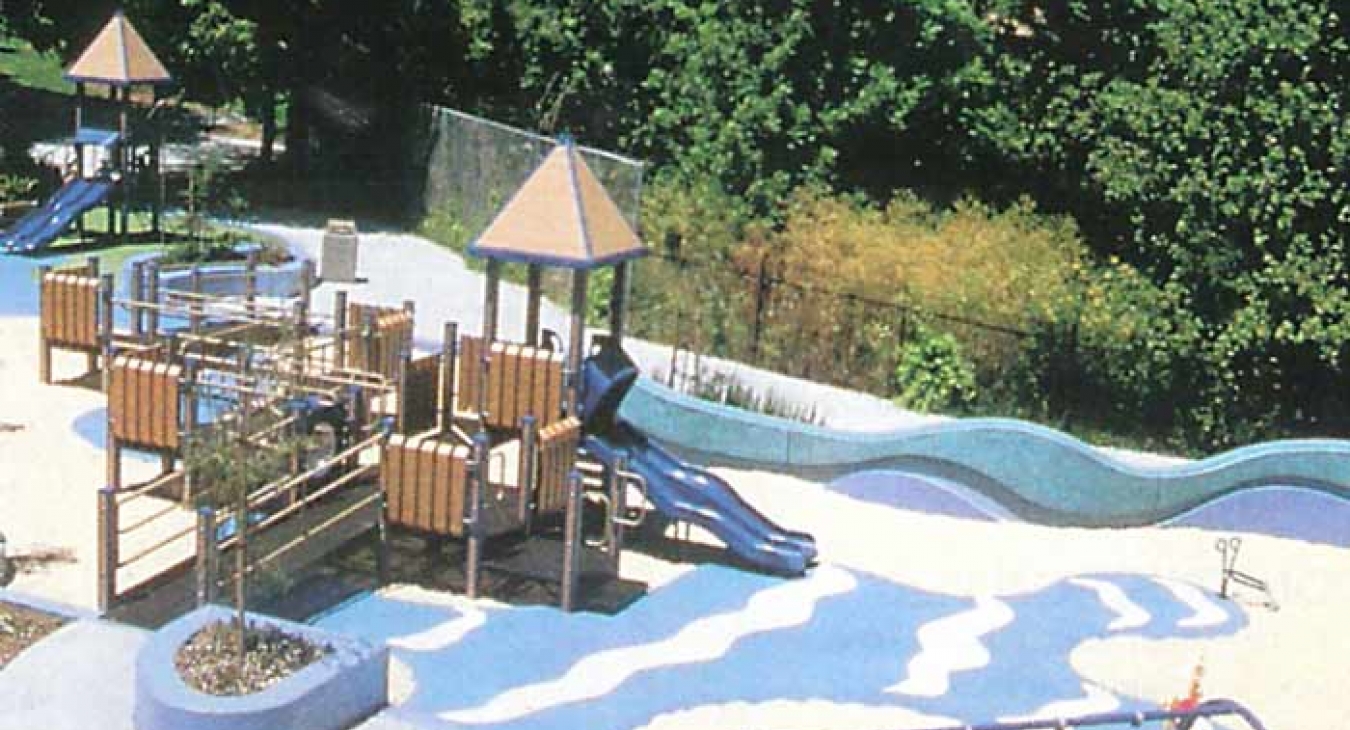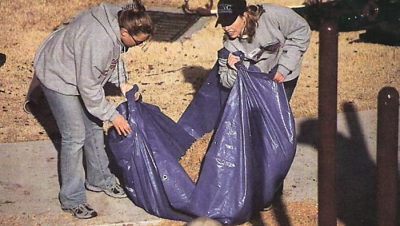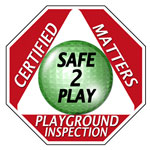Weathering the Weather
Safety surfacing is a necessity for all playgrounds both indoors and out. With specific locations come specific considerations about weather. Climate is often not considered when choosing an appropriate surface for a playground. Let's look at different conditions and the pros and cons of using these various surfaces for each.
MOISTURE
Wet locations are more suited to rubber products rather than organic ones. Rubber does not deteriorate in the presence of moisture, nor does it absorb moisture. Tiles, poured-in-place, rubber mulch, and the like also do well in wet locations because they allow surface water to drain due to their porosity. Rubber surfaces also provide a relatively slip-resistant surface even when wet. Another advantage to using rubber products in wet locations is no loss of shock absorbency when wet. The only disadvantage is a higher initial installed cost when compared to other types of surfacing.
Organic surfaces such as engineered wood fiber can be used in wet locations, however special techniques for installation must be followed. Although drainage is recommended for most installations with wood fiber surfacing, it is critical in wet locations. To use wood fiber in wet locations, the sub-surface must be prepared. A four-inch minimum layer of washed stone must first be installed to allow for drainage of accumulated water in the surface. After the stone base is installed a layer of filter fabric must then be laid over the stone. The wood fiber surfacing is then laid over the filter fabric to the required depth. Generally, this procedure is adequate to provide a natural surface that will endure most wet weather conditions. However, more severe measures, such as a perforated drainpipe, may be utilized for severe water conditions. Because wood absorbs moisture, the surface may remain wet from several days to several weeks depending on specific weather conditions.
Sand is another option for surfacing in wet locations. Because it is a loose-fill material it allows water to drain easily. However, if you have ever been to the beach, I'm sure you have noticed people jogging or walking near the water. The reason for this is the sand is much denser when wet making it easier to walk on. This becomes a problem for safety surfacing because it decreases the shock attenuating characteristics of the sand, thereby increasing the risk of injury. Gravel is also a suitable choice for wet location s. It drains well, does not absorb moisture and does not gain density when wet. There is however a disadvantage to all types of loose-fill surfacing. These types of surfacing materials are easily contaminated with foreign materials. Pieces of glass, metal or wood in the surfacing can create a cut or puncture hazard from falling or stepping on these pieces. Weekly surface maintenance can reduce this risk.
TEMPERATURE
Temperature is another factor to be considered when choosing a surface. Serious burns have occurred to children coming into contact with surfaces exposed to high ambient temperatures and direct sunlight. This is particularly true of rubber surfaces containing dark colors. Warning signs around the playground cautioning parents and children about the potential for burns in hot weather can greatly reduce injuries of this nature. Loose-fill materials tend to dissipate heat more effectively than rubber. Although they may feel hot to the touch, the risk of burns is much lower than with unitary surfacing materials.
Areas with sustained cold temperatures or harsh winters have their own problems, which must be considered. Although rubber surfaces are well suited for cold temperatures, they are not ideal. Poured-in-place rubber and rubber tiles lose some shock attenuating value during cold weather. Special consideration to critical fall heights at lower temperatures must be made in order to ensure the proper thickness of surfacing is used.
Loose-fill surfacing such as engineered- wood fiber, sand, and gravel do well in colder climates. They are unaffected by temperature changes. There is, however, one consideration that should be made concerning surfacing materials of any kind in extreme cold weather. Surfaces that hold even small amounts of moisture can become as hard as concrete in freezing weather. Under these conditions, a fall to the surface can have the potential for serious and life-threatening injury
As you can see there is no one surface perfectly suited for every application. Heat, cold, rain, snow and sun must all be considered when evaluating options for safety surfacing. Many suppliers can provide test data showing the performance of their product in a variety of conditions. The more information you can get on a specific product, the better your ability to make the right choice for your surfacing needs.











Add new comment